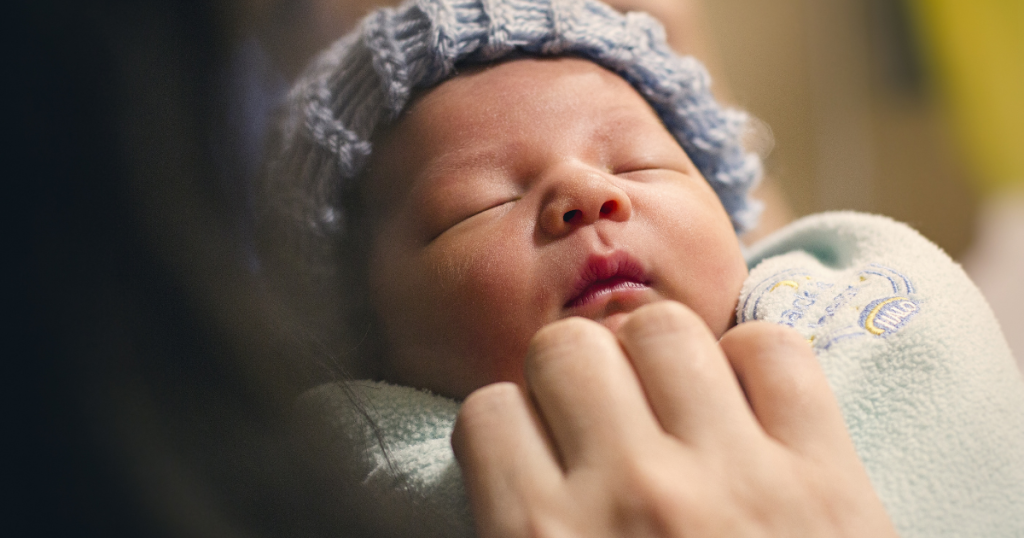
Authors: Mekka Garcia, MD, NYU Grossman School of Medicine
Alison L. Christy, MD, PhD, Providence Pediatric Neurology at St. Vincent Medical Center – Portland, Oregon
Reviewed: September 2021
SUMMARY
Dandy-Walker malformation (DWM) is a rare brain abnormality. It affects the cerebellum, the back part of the brain. This back part of the brain is important for voluntary movement, balance, and coordination. Most children with DWM have delays in motor development. They may take more time learning to crawl or walk.
In severe cases, DWM can lead to problems with the flow of a fluid in the brain called cerebrospinal fluid (CSF). A buildup of CSF in the brain leads to a condition called hydrocephalus. Children with a buildup of CSF may have macrocephaly, a very large head.
DWM is congenital. This means it is something a child is born with, not something that appears later in childhood. DWM can be diagnosed during pregnancy. There is no cure for DWM, but supportive care is available.
JUMP TO
Disorder Overview
DESCRIPTION
The posterior fossa is the back compartment of the brain. The cerebellum sits in it, behind the fourth ventricle. Ventricles are normal pockets in the brain. They hold cerebrospinal fluid (CSF).
DWM includes three distinct brain structure differences:
- The middle part of the cerebellum is missing or smaller in size
- The posterior fossa is bigger than normal
- The fourth ventricle is too large
Dandy-Walker Syndrome
Some children have DWM without any other abnormalities. However, many do have other abnormalities. They can affect:
- The brain
- The heart
- Arms and legs
- Organs in the gut
Dandy-Walker syndrome (DWS) is the term used when other abnormalities accompany DWM.


Associated Issues
Sometimes, problems due to DWM can block the flow of CSF around the brain. This can lead to:
- Macrocephaly (a large head)
- Hydrocephalus (an increase in fluid pressure around the brain)
SIGNS AND SYMPTOMS
DWM may cause no symptoms at all. In rare cases, DWM is found on an MRI in a person with no symptoms. However, most children diagnosed with DWM will have delays in development and macrocephaly.
Symptoms at birth or shortly after birth may include:
- Macrocephaly (an unusually large head)
- Irritability
- Vomiting
- Low muscle tone (floppiness)
- Seizures (bursts of electrical activity in the brain that can cause the body to behave abnormally)
- Delays in motor skills, such as crawling, sitting, walking


Symptoms in older children may include:
- Ataxia (an unsteady gait)
- Headache
- Abnormal vision (double vision)
- Intellectual disability
Dandy-Walker syndrome (DWS) is the term used when DWM occurs alongside other abnormalities in the body. These can include:
- Cardiac differences.
- Ventricular septal defect (a hole in the heart)
- Pulmonary stenosis (a small vein leading to the heart)
- Horseshoe kidney.
- Cleft palate.
- Differences in extremities.
- Abnormal leg or arm lengths
- Fingers or toes that are stuck together
CAUSES
DWM occurs because of problems during fetal development. These problems usually take place during the second trimester of a pregnancy. However, this does not mean that a pregnant mother did something to cause the malformation.
Some possible causes are:
Genetic changes
Toxic exposures
DIAGNOSIS AND LABORATORY INVESTIGATIONS
DWM can be diagnosed in a fetus during pregnancy. This can be done using an ultrasound. An ultrasound takes pictures of the body parts of the fetus, including the brain.
After birth, magnetic resonance imaging (MRI) can be used to confirm the diagnosis. MRI takes pictures of the brain. It can look for signs of the three main structural changes signaling DWM.
DWS Look-Alikes
It is important for doctors to distinguish between DWM and other conditions. Conditions that may look like DWM include:
- Cerebellar hypoplasia. An unusually small cerebellum. This is associated with learning difficulties and problems with balance.
- Mega cisterna magna. A large posterior fossa. This is a normal variation of the brain. It does not cause symptoms.
- Blake’s pouch cyst. An abnormal pocket of fluid at the top of the fourth ventricle.
- Cystic hygroma. A problem with blockage in the lymphatic system. This can cause fluid to gather in a sac in the neck or head, or elsewhere in the body.
TREATMENT AND THERAPIES
There is no cure for DWM. However, therapies can treat symptoms and provide supportive care. Therapies include:
Surgical insertion of a shunt
Developmental therapy
OUTLOOK
The life expectancy of people with DWM depends on the presence and severity of hydrocephalus and other associated issues. Most children with DWM live to adulthood.


Resources
Organizations
Dandy-Walker Alliance
The Dandy-Walker Alliance supports efforts to learn more about possible causes, treatments, and cures for Dandy-Walker syndrome. It also provides support to families affected by the diagnosis. Scrolling down to the bottom of the home page of the website, you can read about a few of the inspirational children who are living with Dandy-Walker syndrome.
The Alliance also hosts a private Facebook group, Dandy Walker Parents, with over 4,000 members.
Hydrocephalus Association
The Hydrocephalus Association’s mission is to find a cure for hydrocephalus and improve the lives of those impacted by the condition. Their vision is a world without hydrocephalus. The Hydrocephalus Association’s Community Networks, also known as support groups, provide localized support, education, and empowerment through the community. The network hosts educational events, support group meetings, and other gatherings that enable individuals and families to connect. The HA’s website includes information about Dandy-Walker syndrome, including a story from 17 year-old Brianna who has hydrocephalus as a result of Dandy-Walker syndrome.
Publications
JCN: NICU Series — Dandy Walker malformations
Podcast from SAGE Neuroscience and Neurology/Journal of Child Neurology (JCN). Dr. Sonika Agarwal of Children’s Hospital of Philadelphia talks about Dandy Walker malformations.
Child Neurology Foundation (CNF) solicits resources from the community to be included on this webpage through an application process. CNF reserves the right to remove entities at any time if information is deemed inappropriate or inconsistent with the mission, vision, and values of CNF.
Research
ClinicalTrials.gov for Dandy-Walker Malformation (birth to 17 years)
These are clinical trials that are recruiting or will be recruiting. Updates are made daily, so you are encouraged to check back frequently.
ClinicalTrials.gov is a database of privately and publicly funded clinical studies conducted around the world. This is a resource provided by the U.S. National Library of Medicine (NLM), which is an institute within the National Institutes of Health (NIH). Listing a study does not mean it has been evaluated by the U.S. Federal Government. Please read the NLM disclaimer for details.
Before participating in a study, you are encouraged to talk to your health care provider and learn about the risks and potential benefits.
The information in the CNF Child Neurology Disorder Directory is not intended to provide diagnosis, treatment, or medical advice and should not be considered a substitute for advice from a healthcare professional. Content provided is for informational purposes only. CNF is not responsible for actions taken based on the information included on this webpage. Please consult with a physician or other healthcare professional regarding any medical or health related diagnosis or treatment options.
References
Alexiou GA, Sfakianos G and Prodromou N. Dandy-Walker malformation: Analysis of 19 cases. Journal of Child Neurology. 2010; 25(2):188-191. https://doi.org/10.1177/0883073809338410
Bosemani T, Orman G, Boltshauser E, et al. (2015). Congenital abnormalities of the posterior fossa. RadioGraphics. 35:200-220. https://doi.org/10.1148/rg.351140038
Dandy-Walker Alliance. https://www.dandy-walker.org
The Journal of Child Neurology, 2021. NICU series with Dr. Sonika Agarwal: Dandy Walker malformations. [podcast] SAGE Neuroscience and Neurology.
https://sageneuroscience.sage-publications.libsynpro.com/jcn-nicu-series-dandy-walker-malformations
National Organization for Rare Disorders. Dandy Walker Malformation. https://rarediseases.org/rare-diseases/acute-disseminated-encephalomyelitis
Stambolliu E, Ioakeim-Ioannidou M, Kontokostas K, et al. The most common comorbidities in Dandy-Walker syndrome patients: A systemic review of case reports. Journal of Child Neurology. 2017; 32(10):886-902. https://doi.org/10.1177/0883073817712589
Thank you to our 2023 Disorder Directory partners:





